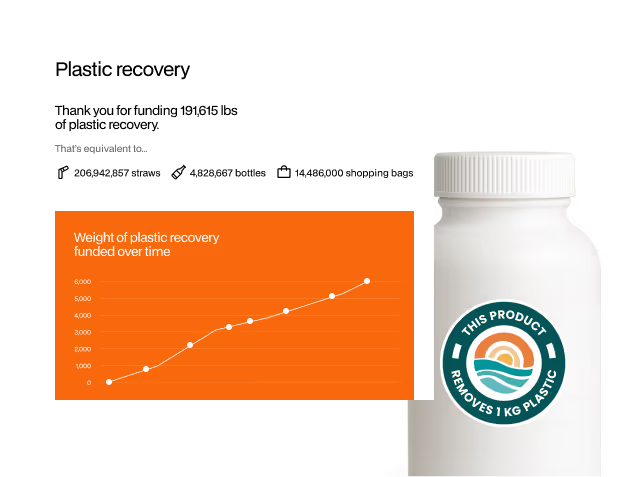Plastic pollution is a pressing global crisis, with millions of tons of plastic waste accumulating in landfills, oceans, and natural environments. If trends continue, we’ll have produced 3.88 billion tons of plastic waste by 2050, most of which will not be recycled. Pollution of the ocean will quadruple.
Over the past few decades, scientists have investigated various innovative approaches to clean up plastic waste. These range from the use of enzymes capable of breaking down plastics, to new technologies that scoop plastic out of the ocean. This is an exploration of the innovations: the impact they have today and their potential long-term effectiveness.
The Promise of Plastic-Digesting Enzymes
Research into plastic-munching microbes date back to the early 1990s. Initially, microbes were mostly effective at slowly degrading biodegradable or chemically flimsy plastics. It was in 2016 that a significant breakthrough occurred when bacteria was discovered that could produce enzymes capable of breaking down synthetic polymers such as polyethylene terephthalate (PET) much quicker.

The potential benefits of using enzymes for plastic degradation are significant. If enzymes could break a complex plastic polymer down into its purest form: it enables pure plastic-to-plastic recycling where the plastic retains its strength and core properties after recycling.
This is already happening. In 2023, Lululemon started exploring this solution for developing recycled textiles and launched what they describe as the world's first enzymatically recycled nylon product.
So why aren’t enzymes solving the plastic waste crisis?
- Diverse plastic types: Today’s plastic waste is not homogeneous. We use a range of plastic polymers in a range of plastics, from LDPE bags to PVC pipes. Each type needs a specific enzyme for decomposition, most of which do not exist. Many packaging products are made from multiple layers of polymers, complicating the breakdown process further.
- Production costs: Producing and maintaining enzymes in sufficient quantities is expensive. The cost of producing enzymes can be as high as $10 per gram, making it economically unfeasible for large-scale applications.
- Efficiency and speed: The rate at which these enzymes degrade plastics is still too slow to be practical on a commercial scale
- Environmental conditions: Enzymes often require specific conditions to function optimally, which may not be easily replicated in natural environments where plastic waste accumulates. Factors such as temperature, pH, and the presence of inhibitors can significantly affect enzyme activity.
Which other innovations might be part of the solution to plastic pollution?
Enzymes are just one of the innovations that are touted as miracle solutions, and regularly generate media headlines. Here are a few more you may have seen:
Worms (or other animals) that digest plastic
.avif)
Researchers have discovered that certain mealworms (technically beetle larvae) can break down plastic, including polystyrene, into organic compounds. These compounds can then be used to create new products.
However, like enzymatic solutions, despite the headlines, the use of animals to digest plastic is not set to solve the large-scale problem. For example, mealworms only digest polystyrene, not all plastics, and do so very slowly. There are concerns about the safety and sustainability of using animals to digest plastic waste at scale.
Innovative solutions for ocean plastic recovery

Collecting plastic waste from the ocean is a visible and tangible method to address plastic pollution. With misconceptions of the Great Pacific Garbage Patch as a floating plastic island (rather than a giant soup of tiny plastic particles) this holds widespread appeal. Innovations to collect plastic from the ocean include boats equipped with nets to collect plastic waste, boats equipped to convert the plastic waste it collects into fuel, and even a groundbreaking method using egg whites to remove ocean microplastics. While various organizations have made significant progress in this area, unresolved challenges still exist regarding the sustainability (financial and environmental) of these methods.
Initiatives like The Great Bubble Barrier, and technology from The Ocean Cleanup tailored for river cleanups that prevent plastic from reaching the ocean in the first place have demonstrated greater cost-effectiveness and are starting to scale up as part of the long-term solution to the pollution crisis.
Conclusion
Headlines often highlight apparent breakthroughs in the science of plastic clean-ups and recycling. While these advancements are noteworthy and can represent important scientific progress, they could have the effect of misleading the public into believing that the problem is close to being solved. There’s a potential danger that this could result in complacency, or undermine efforts to reduce plastic consumption and improve waste management practices.
Sustainable solutions to plastic pollution will require a combination of approaches taken up by business, individuals and the government: embracing the principles of a circular economy.
A circular approach includes (but is not limited to):
- Reduction strategies: Implementing innovative designs and production processes that substitute plastic for other materials, reduce plastic components, or prioritize longevity of use.
- Supply chain optimization: Streamlining supply chain management to reduce waste generation and enabling strategies for refilling and reusing products.
- End-of-Life infrastructure: Developing and managing infrastructure for the responsible disposal and recycling of plastic waste
The "Breaking the Plastic Wave" report serves as a comprehensive resource, offering detailed insights into the global problem of plastic pollution and mapping out potential solutions. The report indicates that an integrated circular strategy can offer better economic, environmental and social outcomes than the current setup.
There’s no doubt that any innovation, be it enzymes or worms capable of digesting plastics, or ocean robots, could offer an exciting avenue for research. Potential solutions to plastic pollution are urgently needed.
However, it is important to maintain a realistic perspective on their current capabilities and the challenges that must be overcome before they can be deployed at a large scale. As innovations and experiments progress, it is important that we all continue to recognize our role in reducing plastic pollution, and that reduction and recovery initiatives that can work at scale are given appropriate support.

.avif)
.png)
.avif)
.png)
.avif)






